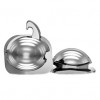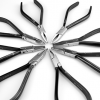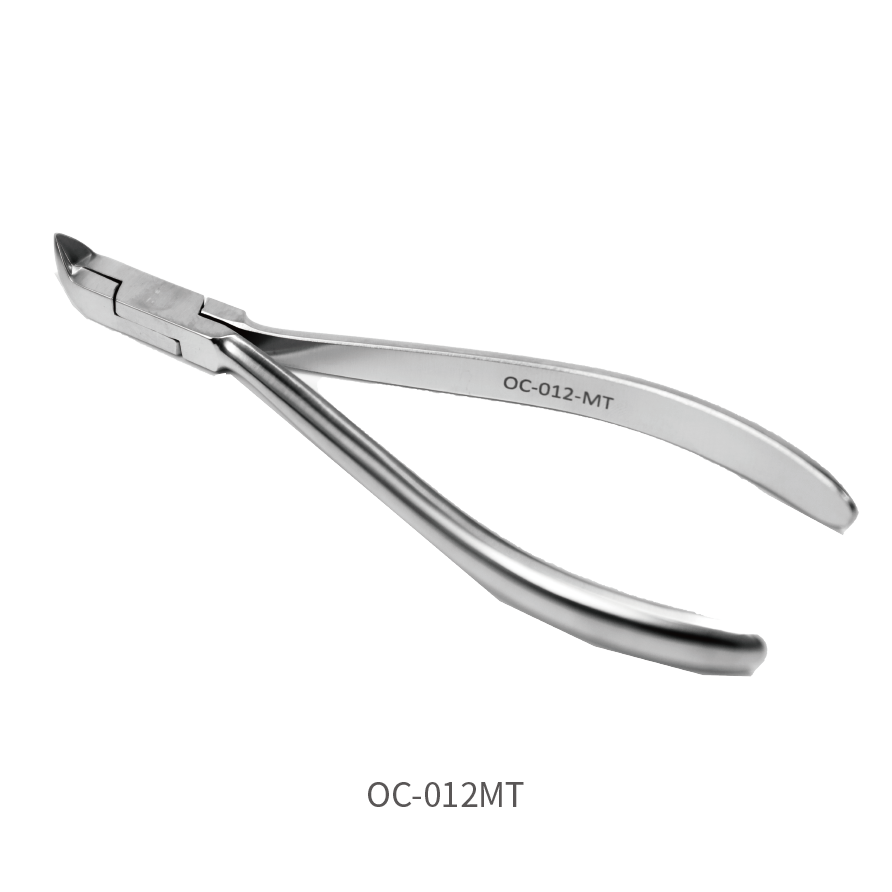The Essential Role of Ligature Cutters in Contemporary Surgical Techniques
29 Aug


The Essential Role of Ligature Cutters in Contemporary Surgical Techniques Table of Contents 1. Introduction to Ligature Cutters 2. Historical Overview of Surgical Tools 3. Design and Functionality of Ligature Cutters 4. Importance of Ligature Cutters in Surgical Procedures 5. Enhancing Patient Safety with Ligature Cutters 6. Different Types of Ligature Cutters 7. Trai
The Essential Role of Ligature Cutters in Contemporary Surgical Techniques Table of Contents 1. Introduction to Ligature Cutters 2. Historical Overview of Surgical Tools 3. Design and Functionality of Ligature Cutters 4. Importance of Ligature Cutters in Surgical Procedures 5. Enhancing Patient Safety with Ligature Cutters 6. Different Types of Ligature Cutters 7. Trai
The Essential Role of Ligature Cutters in Contemporary Surgical Techniques
Table of Contents
- 1. Introduction to Ligature Cutters
- 2. Historical Overview of Surgical Tools
- 3. Design and Functionality of Ligature Cutters
- 4. Importance of Ligature Cutters in Surgical Procedures
- 5. Enhancing Patient Safety with Ligature Cutters
- 6. Different Types of Ligature Cutters
- 7. Training Medical Professionals on Ligature Cutters
- 8. The Future of Ligature Cutters in Surgery
- 9. Frequently Asked Questions
- 10. Conclusion
- 1. Introduction to Ligature Cutters
- 2. Historical Overview of Surgical Tools
- 3. Design and Functionality of Ligature Cutters
- 4. Importance of Ligature Cutters in Surgical Procedures
- 5. Enhancing Patient Safety with Ligature Cutters
- 6. Different Types of Ligature Cutters
- 7. Training Medical Professionals on Ligature Cutters
- 8. The Future of Ligature Cutters in Surgery
- 9. Frequently Asked Questions
- 10. Conclusion
1. Introduction to Ligature Cutters
Ligature cutters are specialized surgical instruments designed for cutting sutures and ligatures effectively. In modern surgical practices, these tools have become essential for enhancing operational efficiency and ensuring patient safety. With the rapid advancements in medical technology, ligature cutters have evolved to become more precise and user-friendly. Understanding their significance in surgical procedures is crucial for both medical professionals and patients alike.
Ligature cutters are specialized surgical instruments designed for cutting sutures and ligatures effectively. In modern surgical practices, these tools have become essential for enhancing operational efficiency and ensuring patient safety. With the rapid advancements in medical technology, ligature cutters have evolved to become more precise and user-friendly. Understanding their significance in surgical procedures is crucial for both medical professionals and patients alike.
2. Historical Overview of Surgical Tools
The development of surgical instruments has a rich history, dating back to ancient civilizations. Early surgeons relied on rudimentary tools to perform complex procedures, often resulting in high rates of infection and complications. As medicine evolved, so did the need for specialized instruments. Ligature cutters emerged as a vital tool, reflecting the advancements in surgical techniques and patient care. Their design and functionality have been refined over centuries to meet the needs of modern medicine.
The development of surgical instruments has a rich history, dating back to ancient civilizations. Early surgeons relied on rudimentary tools to perform complex procedures, often resulting in high rates of infection and complications. As medicine evolved, so did the need for specialized instruments. Ligature cutters emerged as a vital tool, reflecting the advancements in surgical techniques and patient care. Their design and functionality have been refined over centuries to meet the needs of modern medicine.
3. Design and Functionality of Ligature Cutters
Ligature cutters are engineered for precision and ease of use. Typically made from high-quality stainless steel, these instruments feature a sharp blade designed to cut through various materials, including sutures and cords. Their ergonomic design allows for a comfortable grip, enabling surgeons to operate with precision. The functionality of ligature cutters extends beyond mere cutting; they also facilitate knot tying and securing ligatures, making them indispensable in various surgical procedures.
Ligature cutters are engineered for precision and ease of use. Typically made from high-quality stainless steel, these instruments feature a sharp blade designed to cut through various materials, including sutures and cords. Their ergonomic design allows for a comfortable grip, enabling surgeons to operate with precision. The functionality of ligature cutters extends beyond mere cutting; they also facilitate knot tying and securing ligatures, making them indispensable in various surgical procedures.
3.1 Key Features of Ligature Cutters
Ligature cutters are equipped with several important features that enhance their usability:
- **Ergonomic Handles**: Designed to reduce hand fatigue during prolonged use.
- **Precision Blades**: Sharp and durable blades ensure clean cuts, minimizing tissue damage.
- **Safety Mechanisms**: Some models include safety locks to prevent accidental injury.
- **Variety of Sizes**: Available in different sizes to accommodate various surgical needs.
Ligature cutters are equipped with several important features that enhance their usability:
- **Ergonomic Handles**: Designed to reduce hand fatigue during prolonged use.
- **Precision Blades**: Sharp and durable blades ensure clean cuts, minimizing tissue damage.
- **Safety Mechanisms**: Some models include safety locks to prevent accidental injury.
- **Variety of Sizes**: Available in different sizes to accommodate various surgical needs.
4. Importance of Ligature Cutters in Surgical Procedures
The role of ligature cutters in surgery cannot be overstated. Their importance manifests in several ways:
The role of ligature cutters in surgery cannot be overstated. Their importance manifests in several ways:
4.1 Improving Surgical Efficiency
Ligature cutters streamline the surgical process by allowing for quick and precise cutting of sutures, significantly reducing operating time. This efficiency is vital in emergency situations, where every second counts, and can lead to better patient outcomes.
Ligature cutters streamline the surgical process by allowing for quick and precise cutting of sutures, significantly reducing operating time. This efficiency is vital in emergency situations, where every second counts, and can lead to better patient outcomes.
4.2 Enhancing Precision in Surgical Cuts
The design of ligature cutters ensures that surgeons can make accurate cuts with minimal effort. This precision is crucial in delicate procedures where any miscalculation could lead to complications.
The design of ligature cutters ensures that surgeons can make accurate cuts with minimal effort. This precision is crucial in delicate procedures where any miscalculation could lead to complications.
5. Enhancing Patient Safety with Ligature Cutters
Patient safety is a top priority in any surgical setting. Ligature cutters contribute to this goal in several important ways:
Patient safety is a top priority in any surgical setting. Ligature cutters contribute to this goal in several important ways:
5.1 Reducing the Risk of Infection
By providing clean and precise cuts, ligature cutters help minimize tissue damage, thereby reducing the risk of postoperative infections. This feature is particularly important in surgeries involving open wounds.
By providing clean and precise cuts, ligature cutters help minimize tissue damage, thereby reducing the risk of postoperative infections. This feature is particularly important in surgeries involving open wounds.
5.2 Minimizing Blood Loss
Effective cutting of ligatures can help control bleeding during surgery. Ligature cutters allow surgeons to make timely cuts, ensuring that blood vessels are managed appropriately, which is critical in maintaining patient stability.
Effective cutting of ligatures can help control bleeding during surgery. Ligature cutters allow surgeons to make timely cuts, ensuring that blood vessels are managed appropriately, which is critical in maintaining patient stability.
6. Different Types of Ligature Cutters
Various types of ligature cutters are available, each designed for specific surgical applications:
Various types of ligature cutters are available, each designed for specific surgical applications:
6.1 Standard Ligature Cutters
These are versatile tools commonly used in a variety of surgical procedures, suitable for cutting most types of sutures.
These are versatile tools commonly used in a variety of surgical procedures, suitable for cutting most types of sutures.
6.2 Heavy-Duty Ligature Cutters
Designed for more demanding surgical environments, these cutters can handle thicker materials and are often used in orthopedic and trauma surgeries.
Designed for more demanding surgical environments, these cutters can handle thicker materials and are often used in orthopedic and trauma surgeries.
6.3 Disposable Ligature Cutters
These single-use cutters are popular in sterile environments, reducing the risk of cross-contamination and infection.
These single-use cutters are popular in sterile environments, reducing the risk of cross-contamination and infection.
7. Training Medical Professionals on Ligature Cutters
Proper training is essential for the effective use of ligature cutters in surgical settings. Medical professionals must receive comprehensive training to ensure they can use these tools safely and effectively.
Proper training is essential for the effective use of ligature cutters in surgical settings. Medical professionals must receive comprehensive training to ensure they can use these tools safely and effectively.
7.1 Simulation Training
Utilizing simulation-based training can provide surgeons and surgical staff with hands-on experience, allowing them to practice using ligature cutters in a controlled environment.
Utilizing simulation-based training can provide surgeons and surgical staff with hands-on experience, allowing them to practice using ligature cutters in a controlled environment.
7.2 Continuing Education
Ongoing education and workshops can help surgical teams stay current on best practices and advancements in ligature cutter technology, ultimately improving surgical outcomes.
Ongoing education and workshops can help surgical teams stay current on best practices and advancements in ligature cutter technology, ultimately improving surgical outcomes.
8. The Future of Ligature Cutters in Surgery
As technology continues to advance, the future of ligature cutters looks promising. Innovations such as smart ligature cutters that provide real-time feedback during procedures are on the horizon. These advancements could further enhance surgical precision and safety, ultimately benefiting patients.
As technology continues to advance, the future of ligature cutters looks promising. Innovations such as smart ligature cutters that provide real-time feedback during procedures are on the horizon. These advancements could further enhance surgical precision and safety, ultimately benefiting patients.
9. Frequently Asked Questions
9.1 What are ligature cutters used for?
Ligature cutters are primarily used in surgical procedures to cut sutures and ligatures, aiding in efficient and safe surgical practices.
Ligature cutters are primarily used in surgical procedures to cut sutures and ligatures, aiding in efficient and safe surgical practices.
9.2 How do I choose the right ligature cutter?
Choosing the right ligature cutter depends on the specific surgical application, the materials being cut, and the surgeon’s preferences for ergonomics and safety features.
Choosing the right ligature cutter depends on the specific surgical application, the materials being cut, and the surgeon’s preferences for ergonomics and safety features.
9.3 Are ligature cutters reusable?
Some ligature cutters are designed for multiple uses and can be sterilized, while others are single-use disposable options.
Some ligature cutters are designed for multiple uses and can be sterilized, while others are single-use disposable options.
9.4 How do ligature cutters enhance patient safety?
By providing clean cuts and minimizing tissue damage, ligature cutters play a vital role in reducing the risk of infection and controlling bleeding, thereby enhancing overall patient safety.
By providing clean cuts and minimizing tissue damage, ligature cutters play a vital role in reducing the risk of infection and controlling bleeding, thereby enhancing overall patient safety.
9.5 Where can I purchase ligature cutters?
Ligature cutters can be purchased through medical supply companies, surgical instrument retailers, and online marketplaces specializing in medical equipment.
Ligature cutters can be purchased through medical supply companies, surgical instrument retailers, and online marketplaces specializing in medical equipment.
10. Conclusion
Ligature cutters are an essential tool in modern surgical procedures, contributing significantly to the efficiency and safety of surgical practices. With their precise design and functionality, ligature cutters enhance surgical outcomes and minimize risks associated with surgical interventions. As technology continues to evolve, these instruments will undoubtedly undergo further innovations, reinforcing their place as a cornerstone in the surgical toolkit. Understanding the importance of ligature cutters is crucial for healthcare professionals, ultimately leading to improved patient care and safety in the operating room.
Ligature cutters are an essential tool in modern surgical procedures, contributing significantly to the efficiency and safety of surgical practices. With their precise design and functionality, ligature cutters enhance surgical outcomes and minimize risks associated with surgical interventions. As technology continues to evolve, these instruments will undoubtedly undergo further innovations, reinforcing their place as a cornerstone in the surgical toolkit. Understanding the importance of ligature cutters is crucial for healthcare professionals, ultimately leading to improved patient care and safety in the operating room.






10 Comment(s)
Hệ thống cá cược của FB88 rất chuyên nghiệp, tỷ lệ cược rất công bằng.
Các khuyến mãi nạp tiền trên FB88 rất tốt, tôi luôn cảm thấy có lợi khi tham gia.
Các chương trình khuyến mãi của họ rất thú vị, luôn có điều gì đó bất ngờ chờ đợi tôi.
Khuyến mãi nạp tiền của FB88 khiến tôi cảm thấy rất có lợi.
Các chương trình khuyến mãi của họ rất hấp dẫn, mang lại nhiều lợi ích cho người chơi.
Trải nghiệm chơi game trên FB88 luôn là những khoảnh khắc thú vị và đáng nhớ.
Trường Tiểu học Nguyễn Trung Trực được thành lập năm 1985 có địa chỉ tại 9A Phạm Hồng Thái, phường Nguyễn Trung Trực, quận Ba Đình, Hà Nội (Nay thành phường Trúc Bạch). Trường hoạt động dưới sự quản lý của UBND quận Ba Đình và Phòng Giáo dục và Đào tạo Ba Đình. Trường được xây dựng khang trang trên diện tích hơn 3000 m2 với đủ các phòng học và phòng chức năng cho các hoạt động học tập, vui chơi, giải trí của học sinh.
Địa chỉ: Số 9A Phạm Hồng Thái - Ba Đình - Hà Nội
Email: c1nguyentrungtruc-bd@hanoiedu.vn
website: https://c1nguyentrungtruc.badinh.edu.vn/
Điện thoại: 438261441
Trường Tiểu học Nguyễn Trung Trực được thành lập năm 1985 có địa chỉ tại 9A Phạm Hồng Thái, phường Nguyễn Trung Trực, quận Ba Đình, Hà Nội (Nay thành phường Trúc Bạch). Trường hoạt động dưới sự quản lý của UBND quận Ba Đình và Phòng Giáo dục và Đào tạo Ba Đình. Trường được xây dựng khang trang trên diện tích hơn 3000 m2 với đủ các phòng học và phòng chức năng cho các hoạt động học tập, vui chơi, giải trí của học sinh.
Địa chỉ: Số 9A Phạm Hồng Thái - Ba Đình - Hà Nội
Email: kumu.io@kumu.io
website: Https://kumu.io/NhacaiFB88betB88S/nhacaifb88betb88s#nhacaifb88betb88s
Điện thoại: 438261441
Trường Tiểu học Nguyễn Trung Trực được thành lập năm 1985 có địa chỉ tại 9A Phạm Hồng Thái, phường Nguyễn Trung Trực, quận Ba Đình, Hà Nội (Nay thành phường Trúc Bạch). Trường hoạt động dưới sự quản lý của UBND quận Ba Đình và Phòng Giáo dục và Đào tạo Ba Đình. Trường được xây dựng khang trang trên diện tích hơn 3000 m2 với đủ các phòng học và phòng chức năng cho các hoạt động học tập, vui chơi, giải trí của học sinh.
Địa chỉ: Số 9A Phạm Hồng Thái - Ba Đình - Hà Nội
Email: kumu.io@kumu.io
website: Https://kumu.io/NhacaiFB88betB88S/nhacaifb88betb88s#nhacaifb88betb88s
Điện thoại: 438261441
Trường Tiểu học Nguyễn Trung Trực được thành lập năm 1985 có địa chỉ tại 9A Phạm Hồng Thái, phường Nguyễn Trung Trực, quận Ba Đình, Hà Nội (Nay thành phường Trúc Bạch). Trường hoạt động dưới sự quản lý của UBND quận Ba Đình và Phòng Giáo dục và Đào tạo Ba Đình. Trường được xây dựng khang trang trên diện tích hơn 3000 m2 với đủ các phòng học và phòng chức năng cho các hoạt động học tập, vui chơi, giải trí của học sinh.
Địa chỉ: Số 9A Phạm Hồng Thái - Ba Đình - Hà Nội
Email: s666@s666s666s.com
website: Https://s666s666s.com/
Điện thoại: 438261441
Trường Tiểu học Nguyễn Trung Trực được thành lập năm 1985 có địa chỉ tại 9A Phạm Hồng Thái, phường Nguyễn Trung Trực, quận Ba Đình, Hà Nội (Nay thành phường Trúc Bạch). Trường hoạt động dưới sự quản lý của UBND quận Ba Đình và Phòng Giáo dục và Đào tạo Ba Đình. Trường được xây dựng khang trang trên diện tích hơn 3000 m2 với đủ các phòng học và phòng chức năng cho các hoạt động học tập, vui chơi, giải trí của học sinh.
Địa chỉ: Số 9A Phạm Hồng Thái - Ba Đình - Hà Nội
Email: s666@s666s666s.com
website: Https://s666s666s.com/
Điện thoại: 438261441
Trường Tiểu học Nguyễn Trung Trực được thành lập năm 1985 có địa chỉ tại 9A Phạm Hồng Thái, phường Nguyễn Trung Trực, quận Ba Đình, Hà Nội (Nay thành phường Trúc Bạch). Trường hoạt động dưới sự quản lý của UBND quận Ba Đình và Phòng Giáo dục và Đào tạo Ba Đình. Trường được xây dựng khang trang trên diện tích hơn 3000 m2 với đủ các phòng học và phòng chức năng cho các hoạt động học tập, vui chơi, giải trí của học sinh.
Địa chỉ: Số 9A Phạm Hồng Thái - Ba Đình - Hà Nội
Email: s666@s666s666s.com
website: Https://s666s666s.com/
Điện thoại: 438261441
Trường Tiểu học Nguyễn Trung Trực được thành lập năm 1985 có địa chỉ tại 9A Phạm Hồng Thái, phường Nguyễn Trung Trực, quận Ba Đình, Hà Nội (Nay thành phường Trúc Bạch). Trường hoạt động dưới sự quản lý của UBND quận Ba Đình và Phòng Giáo dục và Đào tạo Ba Đình. Trường được xây dựng khang trang trên diện tích hơn 3000 m2 với đủ các phòng học và phòng chức năng cho các hoạt động học tập, vui chơi, giải trí của học sinh.
Địa chỉ: Số 9A Phạm Hồng Thái - Ba Đình - Hà Nội
Email: s666@s666s666s.com
website: Https://s666s666s.com/
Điện thoại: 438261441
dianabol injection for sale
Leave a Comment